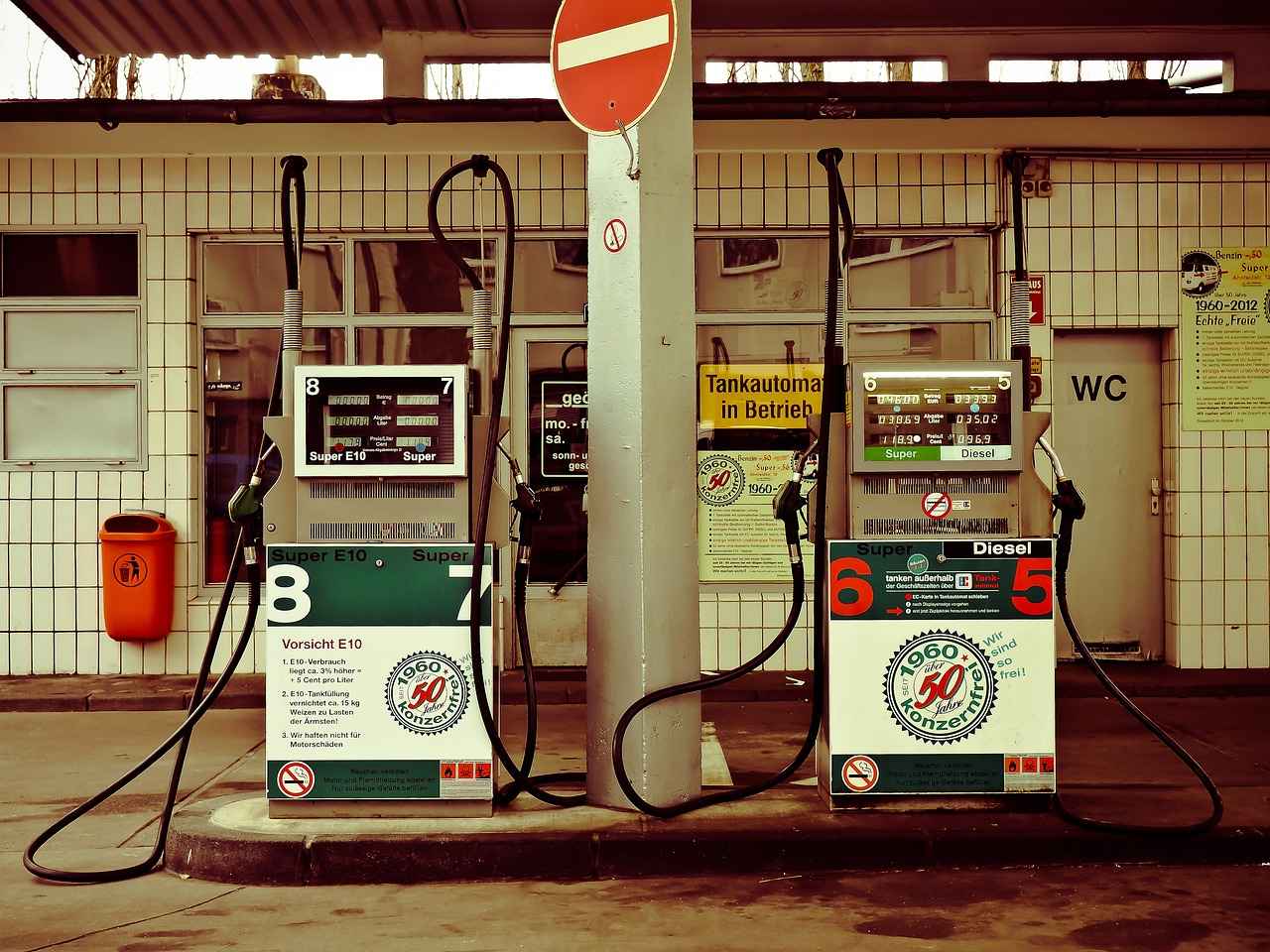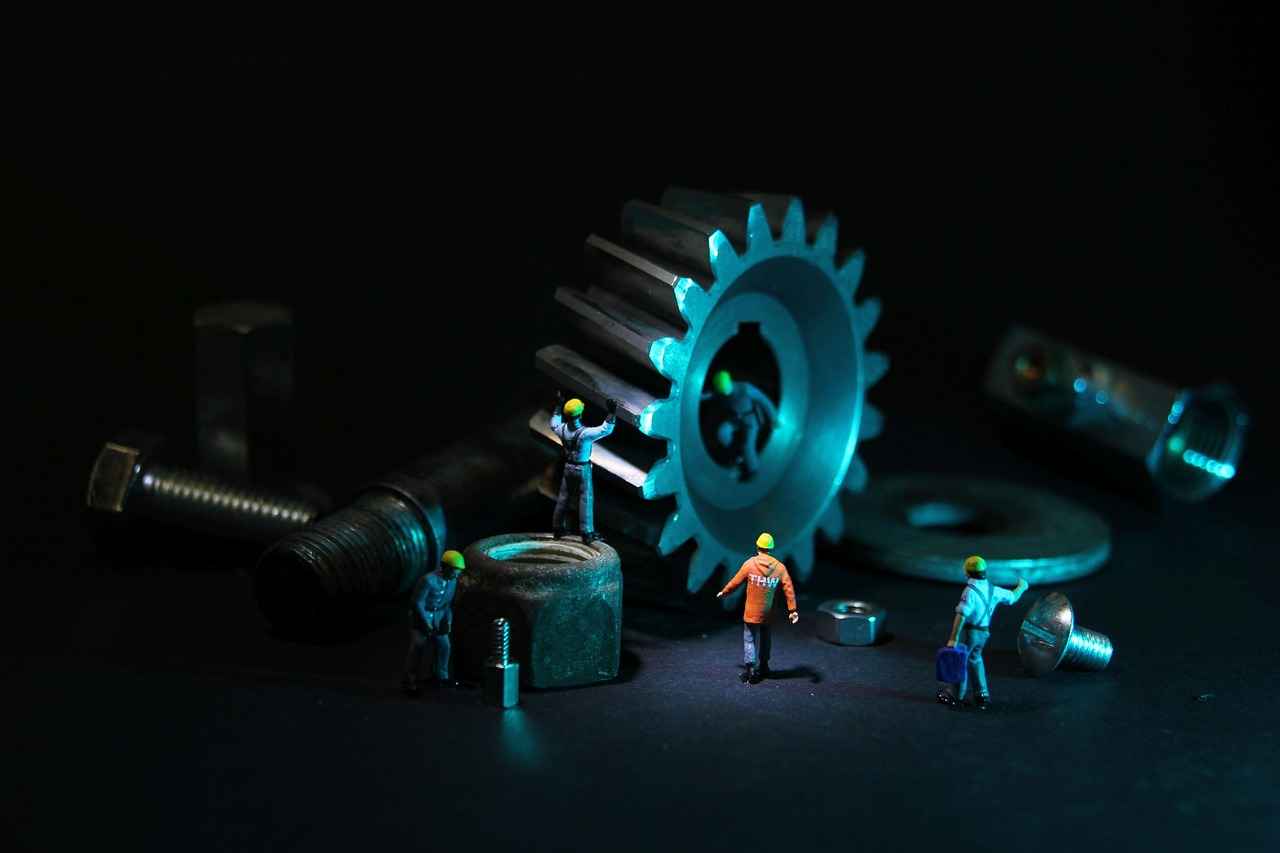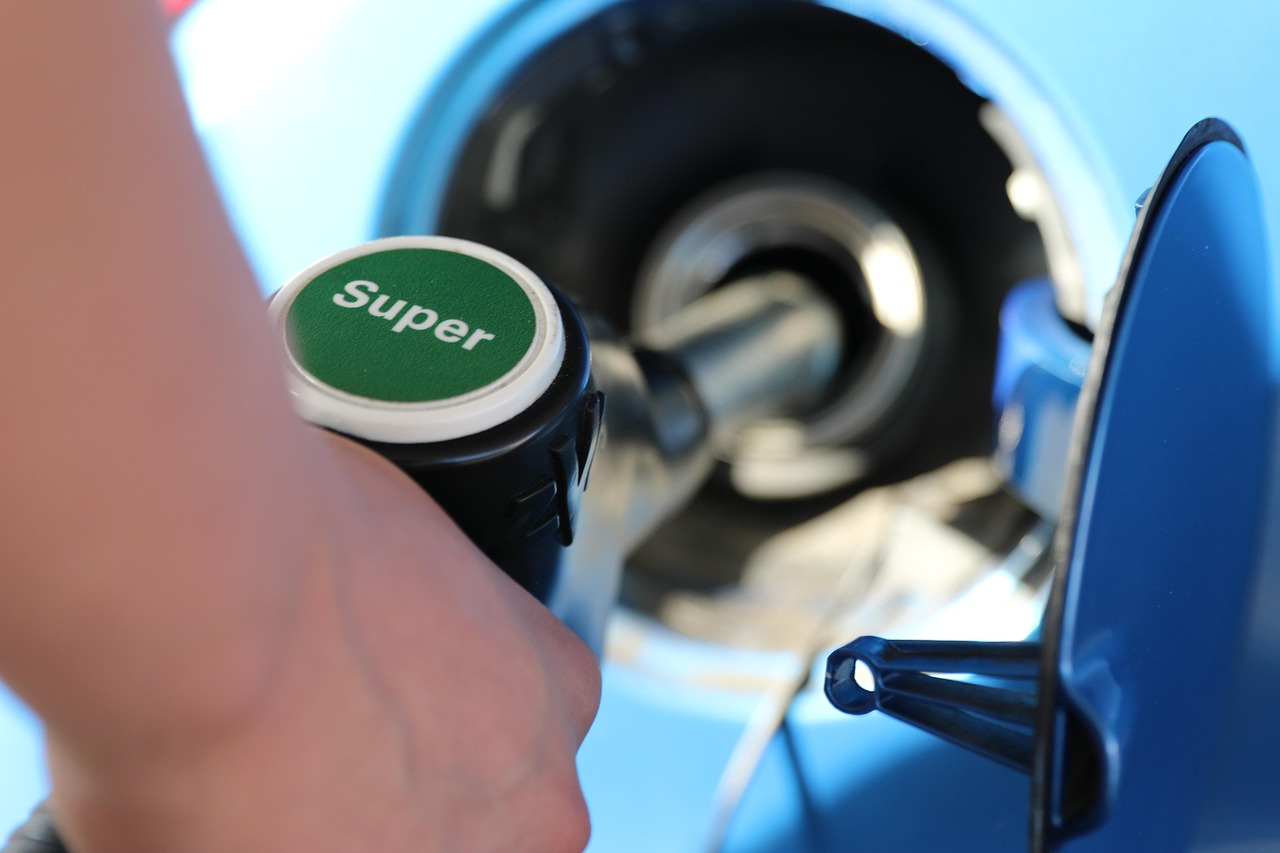This article provides a comprehensive guide on the frequency of fuel filter replacement, its importance, signs of wear, and maintenance tips to ensure optimal vehicle performance.
Understanding the role of the fuel filter is crucial for vehicle maintenance. The fuel filter serves as a barrier that prevents dirt, rust, and other contaminants from entering the engine. This function is essential because clean fuel is vital for efficient combustion and overall engine health. A clogged filter can lead to poor engine performance, increased emissions, and even engine damage over time.
The frequency of fuel filter replacement can vary based on vehicle type, fuel quality, and driving conditions. Generally, it is recommended to change your fuel filter every 20,000 to 30,000 miles. However, it is best to consult your vehicle’s manual for specific recommendations. For vehicles that operate in harsh conditions or use lower-quality fuel, more frequent replacements may be necessary.
Recognizing the symptoms of a failing fuel filter can save you from costly repairs. Common signs include:
- Engine sputtering: If your engine sputters or hesitates during acceleration, it may indicate a clogged fuel filter.
- Difficulty starting: A hard-to-start engine can signal a fuel delivery issue often linked to a dirty filter.
- Decreased fuel efficiency: A noticeable drop in fuel efficiency can be attributed to a clogged filter, forcing the engine to work harder.
Replacing a fuel filter can be a straightforward DIY task if you follow the right steps. Here’s a simple guide:
Before starting the replacement process, ensure you have the right tools. Common items include:
- A wrench or socket set
- A new fuel filter
- Safety glasses to protect your eyes
Follow this methodical approach to replace your fuel filter:
- Relieve fuel pressure by locating the fuel pump fuse and removing it while the engine is running.
- Disconnect the battery to ensure safety.
- Locate the fuel filter, which is usually found along the fuel line.
- Carefully disconnect the old filter and install the new one, ensuring it is securely fastened to prevent leaks.
- Reconnect the battery and replace the fuel pump fuse.
While DIY replacements are possible, certain situations may warrant professional assistance:
Some vehicles have intricate fuel systems that require specialized knowledge for filter replacement. If unsure, consult a professional mechanic to avoid damaging components.
If your vehicle is still under warranty, having a professional handle the replacement may be necessary to maintain coverage. Always check your warranty terms before proceeding with DIY repairs.
By understanding the importance of regular fuel filter maintenance and recognizing the signs of wear, you can keep your vehicle running smoothly and efficiently. Regular checks and timely replacements can prevent more significant issues down the road, ensuring that your vehicle remains in optimal condition.

Why is Replacing Your Fuel Filter Important?
When it comes to vehicle maintenance, one component that often goes overlooked is the fuel filter. Understanding its significance is essential for every car owner. The fuel filter plays a critical role in maintaining your vehicle’s health by ensuring that only clean fuel reaches the engine. This process is vital for the overall performance and longevity of your car.
The primary function of the fuel filter is to prevent dirt, rust, and other contaminants present in the fuel from entering the engine. If these impurities make their way into the engine, they can cause significant damage, leading to costly repairs. A clogged fuel filter can restrict fuel flow, resulting in poor engine performance, reduced fuel efficiency, and even engine failure.
Moreover, a clean fuel filter contributes to optimal fuel delivery. This means that your engine receives the right amount of fuel at the correct pressure, which is essential for efficient combustion. When fuel delivery is compromised, your vehicle may experience symptoms such as engine sputtering, stalling, and difficulty starting, which can be frustrating and inconvenient.
Additionally, regularly replacing your fuel filter can lead to improved fuel economy. A clogged filter forces the engine to work harder, consuming more fuel than necessary. By ensuring that your fuel filter is in good condition, you can help maintain your vehicle’s efficiency and save money at the pump.
It is also worth noting that neglecting the fuel filter can void your vehicle’s warranty. Many manufacturers recommend a specific replacement interval, typically between 20,000 to 30,000 miles. Failing to adhere to these guidelines can lead to engine problems that may not be covered under warranty, resulting in expensive out-of-pocket costs.
In conclusion, understanding the role of the fuel filter is crucial for maintaining your vehicle’s performance and longevity. Regular replacement not only prevents contamination but also enhances fuel efficiency and protects your engine from potential damage. Be proactive in your vehicle maintenance by keeping an eye on your fuel filter and replacing it as recommended.
| Maintenance Task | Recommended Interval |
|---|---|
| Fuel Filter Replacement | Every 20,000 – 30,000 miles |
| Oil Change | Every 5,000 – 7,500 miles |
| Tire Rotation | Every 6,000 – 8,000 miles |
- Prevent engine damage: Regularly replacing your fuel filter helps protect the engine from harmful contaminants.
- Enhance performance: A clean filter ensures optimal fuel delivery, improving engine performance.
- Increase fuel efficiency: A properly functioning fuel filter can lead to better fuel economy.

How Often Should You Replace Your Fuel Filter?
When it comes to maintaining your vehicle, one of the crucial components that often gets overlooked is the fuel filter. This component plays a vital role in ensuring that your engine receives clean fuel, free from contaminants. Understanding how often to replace your fuel filter can significantly impact your vehicle’s performance and longevity.
The frequency of fuel filter replacement can vary depending on several factors, including the type of vehicle you own, your driving habits, and the quality of fuel you use. As a general guideline, it is recommended to replace your fuel filter every 20,000 to 30,000 miles. However, it is always best to consult your vehicle’s manual for specific recommendations tailored to your car model.
For instance, if you drive in harsh conditions—such as frequent stop-and-go traffic, extreme temperatures, or on poorly maintained roads—you may need to replace your fuel filter more often. Additionally, vehicles that run on lower-quality fuel may experience faster clogging of the fuel filter, necessitating more frequent changes.
Being aware of the signs that your fuel filter may be failing can save you from costly repairs down the road. Here are some common indicators:
- Engine Sputtering: If your engine sputters or hesitates during acceleration, it may be a sign that the fuel filter is clogged, restricting fuel flow.
- Difficulty Starting: A hard-to-start engine can indicate that the fuel filter is dirty or failing, impeding the flow of fuel needed for ignition.
- Decreased Fuel Efficiency: If you notice a drop in fuel efficiency, it could be due to a clogged filter forcing your engine to work harder.
Replacing your fuel filter is a task that many vehicle owners can handle themselves, provided they take the necessary precautions. Here’s a step-by-step guide to help you through the process:
1. Gather Necessary Tools: - New fuel filter - Wrench - Safety glasses - Rags for spills2. Relieve Fuel Pressure: - Locate the fuel pump fuse and remove it to prevent fuel from flowing.3. Disconnect the Old Filter: - Carefully disconnect the fuel lines from the old filter, using rags to catch any spilled fuel.4. Install the New Filter: - Connect the new filter, ensuring it is secured properly to avoid leaks.5. Restore Fuel Pressure: - Replace the fuel pump fuse and turn the ignition key to the "on" position to allow the fuel system to pressurize.
While many can replace a fuel filter themselves, there are times when professional help is advisable:
- Complex Fuel Systems: Some vehicles have intricate fuel systems that require specialized knowledge for proper filter replacement.
- Warranty Considerations: If your vehicle is still under warranty, it may be necessary to have a professional complete the replacement to maintain coverage.
In conclusion, understanding how often to replace your fuel filter and recognizing the signs of wear can help maintain your vehicle’s performance. Regular maintenance not only enhances fuel efficiency but also prolongs the life of your engine. Always consult your vehicle’s manual for specific guidelines and don’t hesitate to seek professional assistance when needed.
Signs That Your Fuel Filter Needs Replacement
Maintaining your vehicle’s fuel system is essential for optimal performance and longevity. Among the critical components is the fuel filter, which serves to keep contaminants out of your engine. Understanding the signs that your fuel filter needs replacement can save you from expensive repairs and ensure a smooth driving experience.
Recognizing the symptoms of a failing fuel filter is crucial for vehicle maintenance. Here are some common signs to watch for:
- Engine Sputtering: If your engine sputters or hesitates, especially during acceleration, it may be a sign that the fuel filter is clogged. This restriction can prevent adequate fuel flow, leading to performance issues.
- Difficulty Starting: A hard-to-start engine can indicate a problem with fuel delivery. This issue is often linked to a dirty or failing fuel filter that hampers the flow of gasoline to the engine.
- Decreased Fuel Efficiency: Have you noticed a drop in fuel economy? A clogged fuel filter forces the engine to work harder, which can lead to increased fuel consumption. If you find yourself filling up more often, it might be time to check the fuel filter.
- Unusual Engine Noise: A failing fuel filter can cause your engine to make strange noises, such as whining or sputtering sounds. This could indicate a problem with fuel flow that needs immediate attention.
- Stalling: If your vehicle stalls frequently, especially at low speeds or during idling, it may be due to a faulty fuel filter. This can be a serious safety concern and should be addressed promptly.
Fuel filters can fail for various reasons, including:
- Contaminated Fuel: Poor-quality fuel or fuel contaminated with dirt, rust, or water can clog the filter, leading to reduced performance.
- Age and Wear: Over time, fuel filters can become worn out. Regular maintenance is essential to prevent failures.
- Fuel System Issues: Problems within the fuel system, such as a failing fuel pump, can also lead to premature filter failure.
Preventative measures can help extend the life of your fuel filter:
- Regular Maintenance: Follow your vehicle’s maintenance schedule, including timely fuel filter replacements.
- Quality Fuel: Use high-quality fuel from reputable sources to minimize contaminants.
- Fuel System Cleaning: Consider periodic fuel system cleaning to remove deposits and keep the system functioning efficiently.
While the general recommendation is to replace your fuel filter every 20,000 to 30,000 miles, this can vary based on your vehicle and driving conditions. Always consult your vehicle’s manual for specific recommendations.
Being aware of the signs of a failing fuel filter and taking proactive measures can significantly enhance your vehicle’s reliability and performance. If you suspect an issue, consult a professional mechanic to ensure your vehicle remains in top condition.
Engine Sputtering and Hesitation
Experiencing engine sputtering or hesitation during acceleration can be a frustrating issue for drivers. These symptoms often indicate that something is amiss within the vehicle’s fuel system. One common culprit is a clogged fuel filter, which plays a critical role in maintaining the engine’s performance. Understanding the implications of these symptoms can help you address potential problems before they escalate.
When your engine sputters or hesitates, it typically means that the engine is not receiving the proper amount of fuel needed for optimal performance. A clogged fuel filter restricts the flow of fuel from the tank to the engine, leading to inconsistent fuel delivery. This inconsistency can manifest as sputtering, particularly during acceleration when the engine demands more fuel. Additionally, other factors such as faulty spark plugs, fuel injectors, or even air filters can contribute to similar symptoms.
- Engine Performance Issues: If you notice that your vehicle struggles to accelerate or experiences a rough idle, this is often a sign of a fuel delivery problem.
- Decreased Fuel Efficiency: A clogged fuel filter forces the engine to work harder, which can lead to increased fuel consumption.
- Difficulty Starting: If your engine takes longer to start or requires multiple attempts, a clogged fuel filter may be to blame.
Regularly replacing your fuel filter is essential for maintaining your vehicle’s health. A clean fuel filter ensures that dirt and debris do not enter the engine, which can cause significant damage over time. Neglecting this maintenance can lead to costly repairs and reduced vehicle performance. It is generally recommended to replace the fuel filter every 20,000 to 30,000 miles, but this can vary based on your vehicle’s make and model.
If you are experiencing persistent engine sputtering or hesitation, it may be time to consult a professional mechanic. While some drivers may feel comfortable replacing the fuel filter themselves, others may encounter complexities within their vehicle’s fuel system that require expert knowledge. Additionally, if your vehicle is still under warranty, having a professional handle the replacement can help maintain your coverage.
Understanding the signs of a clogged fuel filter, such as engine sputtering and hesitation, is crucial for maintaining your vehicle’s performance. By recognizing these symptoms early and replacing your fuel filter regularly, you can ensure that your engine runs smoothly and efficiently. If you are unsure about the condition of your fuel filter or the necessary steps for replacement, do not hesitate to seek professional assistance. This proactive approach will not only enhance your driving experience but also extend the lifespan of your vehicle.
Difficulty Starting the Engine
When it comes to vehicle maintenance, understanding the various components that contribute to engine performance is essential. One critical part of this system is the fuel filter, which plays a significant role in ensuring your engine runs smoothly. This article will delve into the importance of the fuel filter, the signs indicating a need for replacement, and what to do if you’re experiencing difficulties starting your engine.
A hard-to-start engine can be frustrating and often signals a fuel delivery issue. One of the primary culprits behind this problem is a dirty or failing fuel filter. When the fuel filter becomes clogged with dirt and debris, it can significantly impede the flow of fuel to the engine, leading to a range of performance issues.
- Engine Sputtering: If your engine sputters or hesitates, it may be struggling to receive adequate fuel due to a blocked filter.
- Decreased Fuel Efficiency: A clogged filter forces your engine to work harder, resulting in increased fuel consumption.
- Difficulty Starting: As mentioned, a hard-to-start engine is a common indicator that your fuel filter needs attention.
The fuel filter is designed to keep contaminants out of the fuel system. When it becomes clogged, it restricts the amount of fuel that can flow to the engine. As a result, the engine may struggle to start because it is not receiving the necessary fuel supply. This can lead to prolonged cranking times and potential stalling.
Regular maintenance is key to avoiding issues with your fuel filter. It is generally recommended to check and potentially replace your fuel filter every 20,000 to 30,000 miles. However, this can vary based on your vehicle model and driving conditions. Always refer to your vehicle’s manual for specific guidance.
1. Check the Fuel Level: Ensure you have enough fuel in the tank.2. Inspect the Fuel Filter: Look for signs of dirt or damage.3. Test the Fuel Pump: A failing fuel pump can also cause starting issues.4. Consult a Mechanic: If problems persist, it may be time to seek professional help.
If you are not comfortable performing maintenance on your vehicle, it is wise to seek professional assistance. A qualified mechanic can quickly diagnose the issue and determine whether the fuel filter needs to be replaced or if there are other underlying problems affecting your engine’s performance.
In summary, understanding the importance of your fuel filter and recognizing the signs of a failing one can help you maintain optimal engine performance. Regular checks and timely replacements can save you from more significant issues down the road, ensuring your vehicle remains reliable and efficient.
Decreased Fuel Efficiency
When it comes to maintaining your vehicle’s performance, one of the critical components to monitor is the fuel filter. A clogged fuel filter can lead to several issues, with being one of the most noticeable symptoms. This article delves into the reasons behind this phenomenon and offers insights on how to address it effectively.
The fuel filter plays a vital role in your vehicle’s fuel system by trapping dirt, rust, and other debris before they can enter the engine. Over time, as contaminants accumulate, the filter can become clogged. This blockage restricts fuel flow, causing the engine to work harder to maintain performance. Consequently, this results in a significant increase in fuel consumption.
When the fuel filter is clogged, the engine struggles to receive the necessary amount of fuel. This situation can lead to several performance issues:
- Engine Strain: The engine must exert more effort to draw fuel through the clogged filter, leading to increased wear and tear.
- Power Loss: Reduced fuel flow can result in a noticeable decrease in engine power, making acceleration sluggish.
- Engine Stalling: In severe cases, the engine may stall completely if it cannot get enough fuel.
Recognizing the signs of a clogged fuel filter early can help prevent extensive damage to your engine. Some common indicators include:
- Reduced Fuel Efficiency: If you notice that you are filling up more frequently, it could be a sign that your fuel filter is clogged.
- Engine Sputtering: A sputtering engine during acceleration often indicates that fuel delivery is being interrupted.
- Difficulty Starting: If your vehicle struggles to start, it may be due to inadequate fuel reaching the engine.
To ensure your vehicle runs efficiently, regular maintenance of the fuel filter is essential. Here are some tips:
- Regular Checks: Inspect your fuel filter during routine vehicle maintenance.
- Follow Manufacturer Guidelines: Adhere to the recommended replacement intervals, typically every 20,000 to 30,000 miles.
- Use Quality Fuel: Using high-quality fuel can help minimize the buildup of contaminants in your fuel system.
It is crucial to replace your fuel filter at the recommended intervals or sooner if you notice any signs of decreased efficiency. A new fuel filter can restore your vehicle’s performance and improve fuel economy, ultimately saving you money at the pump.
In conclusion, maintaining your fuel filter is a simple yet effective way to enhance your vehicle’s fuel efficiency and overall performance. By being proactive and attentive to your vehicle’s needs, you can avoid costly repairs and ensure a smoother driving experience.

How to Replace Your Fuel Filter
Replacing a fuel filter is an essential part of vehicle maintenance that can be easily accomplished as a DIY task. Understanding the process not only empowers you as a car owner but also helps in maintaining your vehicle’s performance.
To ensure your vehicle runs smoothly, it’s important to know how to replace your fuel filter. Here’s a detailed guide that outlines everything you need to know about this vital maintenance task.
The fuel filter plays a critical role in your vehicle’s fuel system. It filters out impurities and contaminants from the fuel before it reaches the engine. A clogged filter can lead to poor engine performance, reduced fuel efficiency, and even engine damage.
- Wrench: To disconnect the fuel lines.
- New Fuel Filter: Make sure to purchase the correct filter for your vehicle model.
- Safety Glasses: Protect your eyes from fuel splashes.
- Rags: To clean up any spills.
- Fuel Line Disconnect Tool: Optional, but can make the job easier.
- Relieve Fuel Pressure: Before starting, relieve the fuel pressure in the system. This can usually be done by removing the fuel pump fuse and running the engine until it stalls.
- Locate the Fuel Filter: Depending on your vehicle, the fuel filter may be located under the car, in the engine compartment, or near the fuel tank.
- Disconnect the Old Filter: Use your wrench to carefully disconnect the fuel lines from the old filter. Be cautious, as fuel may spill out.
- Install the New Filter: Position the new filter in the same direction as the old one. Secure it in place and reconnect the fuel lines.
- Check for Leaks: Once everything is reconnected, turn the ignition to the “on” position (without starting the engine) to pressurize the system. Check for leaks around the filter.
- Start the Engine: If there are no leaks, start your engine and let it run for a few minutes. Monitor for any unusual sounds or issues.
While replacing a fuel filter can be a straightforward task, there are certain situations where professional assistance may be necessary:
- Complex Fuel Systems: Some vehicles have intricate fuel systems that require specialized knowledge for filter replacement. If you feel uncertain, it’s best to consult a professional mechanic.
- Warranty Considerations: If your vehicle is still under warranty, having a professional handle the replacement may be necessary to maintain coverage. Always check your warranty terms before proceeding with DIY repairs.
In conclusion, replacing your fuel filter is a manageable task that can significantly enhance your vehicle’s performance. By following the steps outlined above, you can ensure that your vehicle runs efficiently and avoid potential issues down the line.
Gathering Necessary Tools
When it comes to maintaining your vehicle, replacing the fuel filter is a critical task that should not be overlooked. Before diving into the replacement process, it is essential to gather the necessary tools to ensure a smooth and efficient operation. This section will outline the tools you need, their importance, and tips for a successful fuel filter replacement.
Before starting the replacement process, ensure you have the right tools on hand. Having the appropriate equipment not only makes the job easier but also helps prevent any potential damage to your vehicle. Here are some common items you should consider:
- Wrench Set: A good set of wrenches is crucial for loosening and tightening the connections on the fuel filter. Make sure to have both metric and standard sizes available.
- New Fuel Filter: Always purchase a high-quality replacement fuel filter that is compatible with your vehicle’s make and model. Check your owner’s manual for specifications.
- Safety Glasses: Protecting your eyes is vital when working on your vehicle. Safety glasses will shield your eyes from fuel spills and debris.
- Rags or Towels: Keep some rags handy to wipe away any spills during the replacement process. This will help maintain a clean workspace and prevent slipping hazards.
- Fuel Line Disconnect Tool: In some vehicles, a special tool may be required to disconnect the fuel lines safely. This tool can simplify the process and prevent damage to the lines.
- Gloves: Wearing gloves can protect your hands from fuel exposure and provide a better grip on tools.
Having the right tools not only makes the replacement process easier but also enhances your safety. Make sure to work in a well-ventilated area and keep a fire extinguisher nearby, as fuel is highly flammable. Before you start, it is wise to familiarize yourself with your vehicle’s specific fuel filter location and the steps required for replacement.
Once you have gathered all the necessary tools and equipment, you will be well-prepared to proceed with the fuel filter replacement. This preparation is key to ensuring that you can complete the task efficiently and effectively, minimizing the risk of complications.
In summary, taking the time to gather the right tools before starting the fuel filter replacement process is crucial. Not only does it facilitate a smoother operation, but it also ensures that you can complete the task safely and effectively. By following these guidelines, you can maintain your vehicle’s performance and longevity.
Step-by-Step Replacement Process
Replacing your fuel filter is an essential maintenance task that can significantly enhance your vehicle’s performance and longevity. By following a systematic approach, you can ensure that the replacement process is safe and effective. Below, we outline a detailed step-by-step guide to help you successfully replace your fuel filter.
To start, it’s crucial to follow a methodical approach to replace your fuel filter. This process not only ensures that you do it correctly but also minimizes the risk of accidents or damage to your vehicle.
- 1. Relieve Fuel Pressure: Before you begin, it’s important to relieve the fuel pressure in your vehicle’s fuel system. This can typically be done by removing the fuel pump fuse and running the engine until it stalls. This step prevents fuel from spraying when you disconnect the filter.
- 2. Gather Necessary Tools: Ensure you have all the required tools at hand. You will need a wrench or socket set, a new fuel filter, safety glasses, and possibly a fuel line disconnect tool, depending on your vehicle’s make and model.
- 3. Locate the Fuel Filter: The fuel filter’s location can vary based on your vehicle. Common locations include under the car near the fuel tank or in the engine bay. Consult your vehicle’s manual for precise details.
- 4. Disconnect the Old Filter: Carefully disconnect the fuel lines from the old filter. It’s advisable to use a rag to catch any residual fuel. Depending on your vehicle, you may need to press tabs or use a special tool to release the lines.
- 5. Install the New Filter: Take the new fuel filter and install it in the correct orientation, ensuring that the flow direction matches the markings on the filter. Securely attach the fuel lines to the new filter, making sure they are tight to prevent leaks.
- 6. Reconnect Fuel Pump Fuse: Once the new filter is in place, reconnect the fuel pump fuse that you removed earlier. This will allow the fuel system to pressurize again.
- 7. Check for Leaks: Start your engine and visually inspect the new filter for any signs of leakage. If you notice any fuel dripping, turn off the engine immediately and recheck your connections.
- 8. Dispose of the Old Filter: Properly dispose of the old fuel filter according to local regulations. Fuel filters can contain harmful substances, so it’s important to handle them with care.
By following these steps, you can successfully replace your fuel filter and maintain your vehicle’s efficiency. Regular maintenance, including timely fuel filter replacements, is key to ensuring that your engine runs smoothly and efficiently.
Note: If you encounter any difficulties during the replacement process or if you are unsure about any steps, it may be best to consult a professional mechanic. They can provide expert assistance and ensure that the job is done correctly.

Professional Fuel Filter Replacement: When to Seek Help?
When it comes to maintaining your vehicle, understanding the importance of the fuel filter is crucial. While DIY replacements can be an option for many car owners, there are specific circumstances where seeking professional assistance is advisable. Knowing when to ask for help can significantly impact your vehicle’s performance and longevity.
Replacing a fuel filter is not just about unscrewing one part and attaching another. It requires a comprehensive understanding of your vehicle’s fuel system. Professional mechanics have the expertise to diagnose issues that may not be immediately apparent to a DIY enthusiast. Here are some scenarios where professional help is essential:
Modern vehicles often have intricate fuel systems that can vary significantly between models. If your vehicle is equipped with a complex fuel injection system, it may be challenging to replace the filter without specialized knowledge. Consulting a professional ensures that the replacement is done correctly, minimizing the risk of damaging sensitive components.
If your vehicle is still under warranty, performing a DIY fuel filter replacement could void that warranty. Many manufacturers require that any maintenance be performed by a certified technician to maintain coverage. Always check your warranty terms before proceeding with any repairs to avoid unexpected costs.
Before deciding to replace your fuel filter, it’s essential to recognize the signs that indicate a need for replacement. If you notice any of the following symptoms, it might be time to consult a professional:
- Engine sputtering: This can indicate restricted fuel flow due to a clogged filter.
- Difficulty starting: If your engine struggles to start, a failing fuel filter could be the culprit.
- Decreased fuel efficiency: A drop in fuel economy might suggest that your filter is not allowing adequate fuel flow.
Replacing a fuel filter involves working with the vehicle’s fuel system, which can be hazardous. Fuel is flammable, and improper handling can lead to dangerous situations. Professional mechanics have the right tools and safety measures in place to perform the job safely, reducing the risk of accidents.
While DIY repairs can save you money upfront, the potential costs associated with mistakes can be significant. A botched fuel filter replacement can lead to engine damage or fuel leaks, resulting in expensive repairs. Weighing the cost of professional services against the risks of DIY repairs is essential for making an informed decision.
In summary, while it is possible to replace your fuel filter on your own, there are several compelling reasons to consider professional assistance. From complex fuel systems and warranty issues to safety and cost-effectiveness, understanding when to seek help can ensure your vehicle remains in optimal condition. Trusting a professional can provide peace of mind and help maintain your vehicle’s performance for years to come.
Complex Fuel Systems
When it comes to maintaining your vehicle, understanding the intricacies of its fuel system is essential. are often found in modern vehicles, and these systems can be quite intricate, requiring specialized knowledge for tasks such as fuel filter replacement. If you are not familiar with the specific requirements of your vehicle’s fuel system, it is highly advisable to consult a professional mechanic.
Many vehicles today incorporate advanced technology in their fuel systems, which can include multiple components working in harmony to ensure optimal performance. These systems often involve:
- Fuel pumps that are electronically controlled
- Fuel injectors that require precise calibration
- Pressure regulators that maintain the correct fuel pressure
Each of these components plays a critical role in the overall function of the fuel system, and improper handling during maintenance can lead to serious issues.
While some vehicle owners may be comfortable tackling a fuel filter replacement on their own, there are several signs that indicate it is time to seek professional help:
- Unusual noises from the fuel system, such as whining or sputtering sounds
- Warning lights on the dashboard that indicate fuel system issues
- Fuel leaks observed under the vehicle, which can indicate a more serious problem
If you decide to consult a professional mechanic, here are the steps you can expect:
- Diagnostic Testing: The mechanic will conduct a thorough diagnostic to identify any issues within the fuel system.
- Component Inspection: They will inspect the fuel filter and other components to determine if they require replacement.
- Expert Recommendations: Based on their findings, the mechanic will provide recommendations for repairs or replacements.
For those whose vehicles are still under warranty, it is crucial to consider the implications of performing maintenance yourself. Many manufacturers stipulate that certain repairs must be conducted by certified professionals to maintain warranty coverage. Always check your vehicle’s warranty terms before proceeding with any DIY repairs.
In summary, while understanding your vehicle’s fuel system is beneficial, it is essential to recognize when a professional’s expertise is required. Complex fuel systems can be challenging, and improper handling can lead to significant damage. Always prioritize safety and the longevity of your vehicle by consulting a qualified mechanic when in doubt.
Warranty Considerations
When it comes to maintaining your vehicle, understanding the nuances of your warranty is essential, especially regarding repairs like fuel filter replacement. Many car owners may not realize that performing certain maintenance tasks themselves can potentially void their warranty. In this section, we will explore and why it’s crucial to consult your warranty terms before making any DIY repairs.
Your vehicle’s warranty typically covers a range of repairs and replacements, including engine components, transmission issues, and sometimes even parts like the fuel filter. However, the specifics can vary significantly based on the manufacturer and the type of warranty you have. It’s important to read the fine print to understand what is included in your coverage.
If your vehicle is still under warranty, it may be necessary to have a professional handle the replacement of the fuel filter and other components. This is crucial because:
- Expertise: Professionals have the training and experience to perform repairs correctly, reducing the risk of further damage.
- Documentation: Having a certified mechanic perform the work provides documented proof of maintenance, which is often required to keep your warranty intact.
- Warranty Compliance: Many warranties stipulate that repairs must be done by authorized service centers to maintain coverage.
While DIY repairs can save money, they come with risks. If you replace your fuel filter yourself and something goes wrong, you may find that your warranty is voided. This can lead to significant out-of-pocket expenses for repairs that would otherwise be covered. It’s essential to weigh the risks against the potential savings.
Before proceeding with any DIY repairs, always consult your warranty terms. Look for sections that discuss maintenance and repairs, and pay close attention to any clauses that might indicate the need for professional service. If you’re unsure, don’t hesitate to contact your dealership or the warranty provider for clarification.
In certain situations, it’s advisable to seek professional assistance:
- Complex Repairs: If your vehicle has a complicated fuel system, a professional mechanic will ensure that the replacement is done correctly.
- Warranty Concerns: If you are unsure about your warranty terms, it’s prudent to consult a professional to avoid any potential issues.
- Safety Issues: If you suspect that the fuel filter issue could lead to safety concerns, it’s best to leave it to the experts.
In summary, while DIY repairs can be tempting, understanding your warranty and the implications of performing your own maintenance is critical. Always check your warranty terms and consider consulting a professional to ensure your vehicle remains in optimal condition and your warranty stays intact.
Frequently Asked Questions
- How do I know if my fuel filter needs to be replaced?
If your engine is sputtering, has difficulty starting, or you notice a drop in fuel efficiency, these could be signs that your fuel filter is clogged and needs replacement.
- Can I replace my fuel filter myself?
Absolutely! Replacing a fuel filter can be a straightforward DIY task. Just make sure you have the right tools and follow the proper steps to ensure a successful replacement.
- How often should I change my fuel filter?
It’s generally recommended to change your fuel filter every 20,000 to 30,000 miles. However, always check your vehicle’s manual for specific recommendations.
- What tools do I need to replace a fuel filter?
You’ll typically need a wrench, a new fuel filter, and safety glasses. Having these tools handy will make the process much smoother!
- When should I seek professional help for fuel filter replacement?
If your vehicle has a complex fuel system or if you’re unsure about the replacement process, it’s best to consult a professional mechanic to avoid potential damage.




